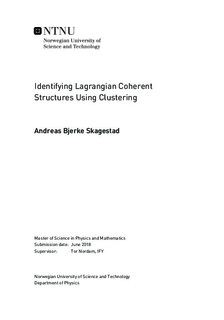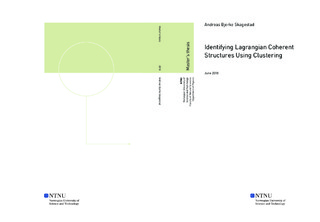| dc.description.abstract | In these times of rapid environmental changes, our understanding of nature becomes ever more crucial. For example, the spread of oil spills and microplastics can have far reaching consequences for the ecology. Previous attempts at explaining the dynamics of ocean currents have been comprised of e.g. studying complicated and tangled plots of trajectories. Recent developments linking non-linear dynamics with fluid mechanics have led to the emergence of Lagrangian Coherent Structures (LCSs). LCSs focus on the existence of repelling and attracting material lines which govern the dynamics of flow fields. Farazmand and Haller (2012) proposed a computational approach to identify LCSs from their variational theory. An important part of this method was the development of material lines, and the identification of LCSs among these lines. In order to identify the LCSs, the concept of locally most repelling and attracting must be defined. The work in this thesis builds on that of Farazmand and Haller (2012) and aims at developing an alternative, more objective method for selecting the locally most repelling and attracting lines based on clustering.
Clustering is a class of unsupervised machine-learning algorithms which uncovers underlying patterns in the data. Applying clustering to the set of material lines would result in groups of similar lines. Then the most repelling or attracting material line from each of the clusters would be classified as the LCSs of the system.
This approach was tested on an analytically defined test case known as the double gyre, and a set of modelled ocean data. Three different clustering algorithms were tested; DBSCAN, Agglomerative-clustering, and Affinity propagation. Additionally, different methods for dimensional reduction were also tested to see if the set of lines could be represented in a more compact way. The LCSs classified in the double gyre field matched the results from Farazmand and Haller (2012). The resulting set of LCSs calculated for the modelled data is also presented. In order to test the validity of the uncovered LCSs, they were advected by the flow to study their effect on nearby trajectories. The approach which gave the most promising results was to first calculate the pairwise similarities between lines, and then to use Affinity propagation to cluster the matrix comprised of these distances. The Fr\'{e}chet distance was used to measure the pairwise similarity. This approach seemed to consistently group the lines such that a set of LCSs which explained the underlying dynamics of the field, were found. | |

